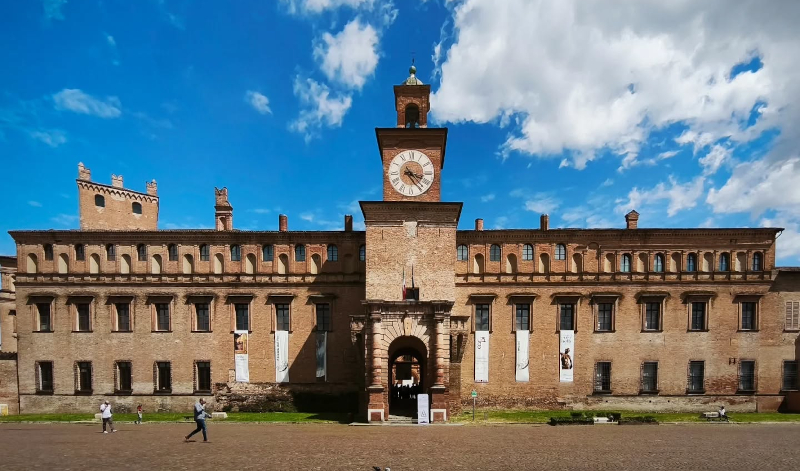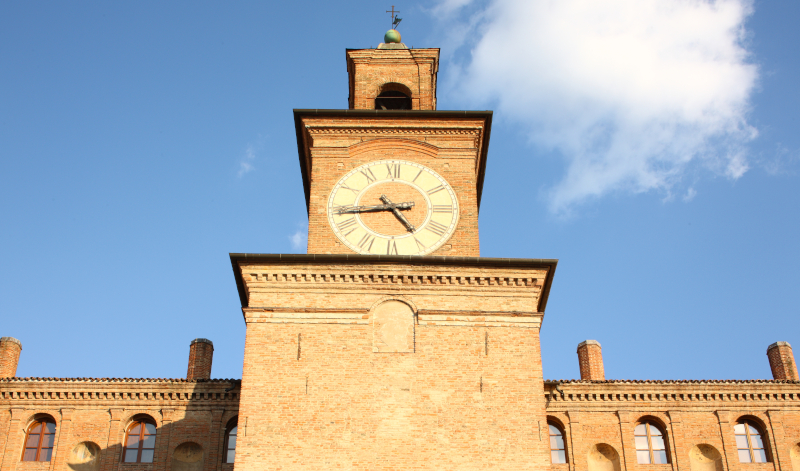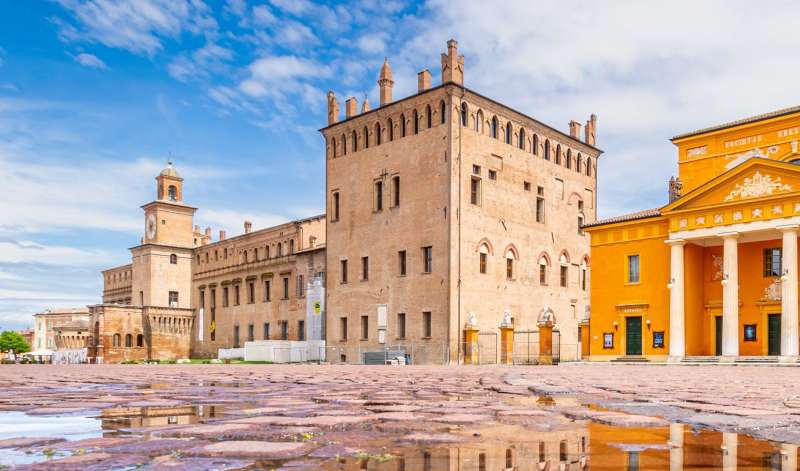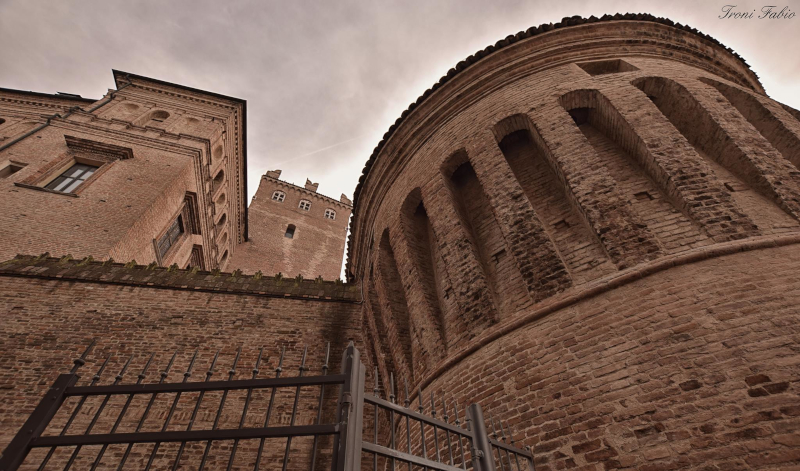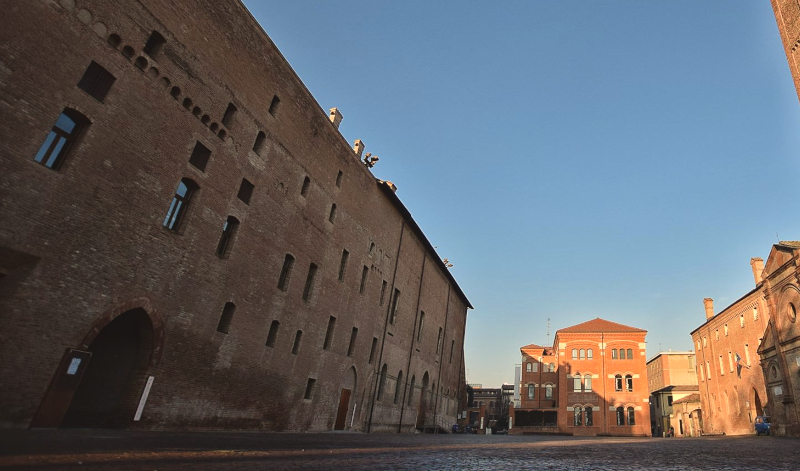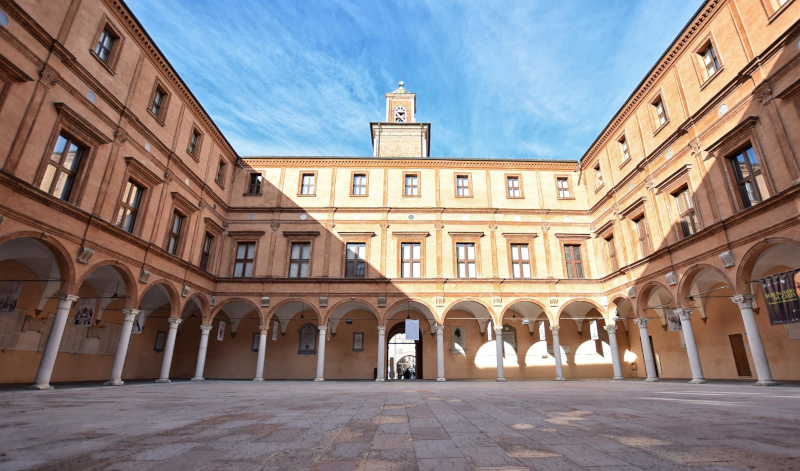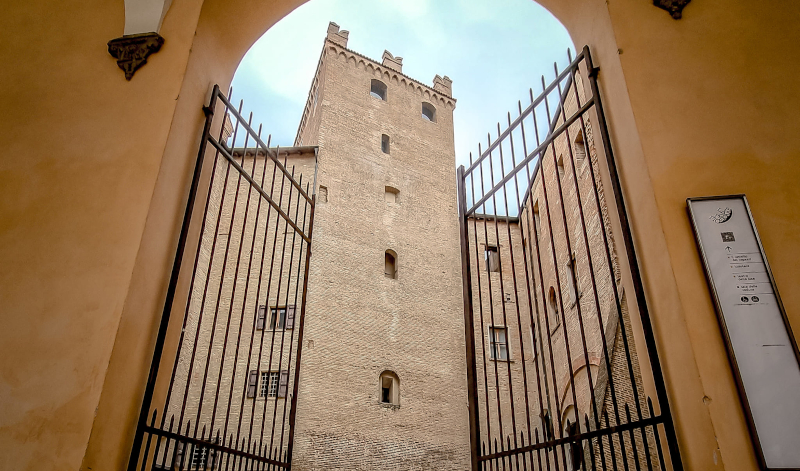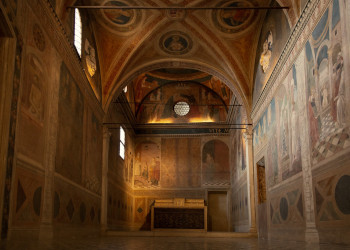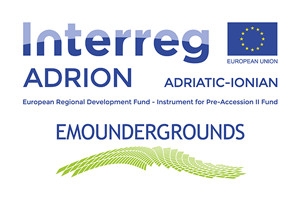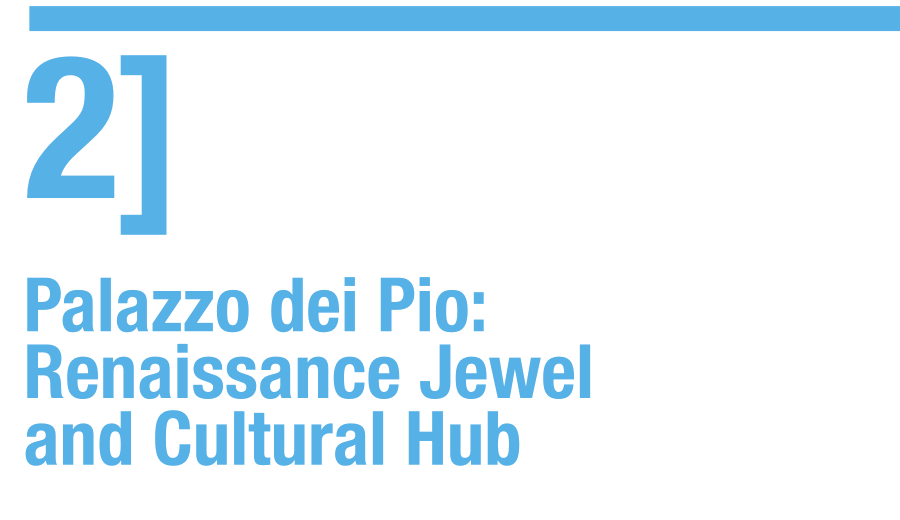
Palazzo dei Pio stands majestically over Piazza dei Martiri, dominating the square with its striking presence. The visit begins in the Courtyard of Honour, a Renaissance masterpiece featuring marble columns and overlapping loggias—the palace’s first representative space.
The tour continues through the Palace Museum, with its noble apartments and collections dedicated to Renaissance art, wood engraving, and the history of the Pio family rule. Of special note is the Chapel of the Pio, adorned with frescoes including a portrait of Prince Alberto III Pio of Savoy.
The City Museum narrates 3,500 years of Carpi’s history through artifacts, craftsmanship, and multimedia displays.
The Municipal Historical Archive preserves the administrative memory of the city.
Finally, in the north-west wing, the Castle for Kids welcomes families into spaces dedicated to reading, play, and creativity - featuring set designs by renowned illustrators such as Emanuele Luzzati, Gianni De Conno, and Roberto Rebaudengo. An experience of art, history, and culture - designed for all ages.
other audios
Courtyard of Honour
The central body of the building on the square is occupied by the splendid Renaissance Facade, with its chiaroscuro rhythm given by the presence of windows and recesses where, in the past, there used to be polychrome frescoes of ancient subjects portraying Roman emperors as statues.
The centre of Palazzo dei Pio facade is characterized by the Clock Tower, the main entrance to the complex. The construction of the Tower started in 1577 on the old keep of the Castle.
The most impressive element of the west side of Palazzo dei Pio is the Torrione degli Spagnoli or Torrione di Galasso now closing the monumental complex in the South. The building, built between 1440 and 1450 by connecting two previous towers, is a large rectangular-shaped tower with a characteristic vertical structure, set on more levels with cross-vaulted rooms which are sumptuously frescoed.
The north-west angle of the palace facade on the square is characterized by the turret of the Aviary. The low round building, built in 1480 had originally the function of angular turret around which the canal flew.
Built by Giberto Pio around 1443-44 the impressive building presents a structure with inner arcaded courtyard, similar in the model to the contemporary Ferrara architectures. The North wing and the facade are what remain of the original XV century residence, with the ogival arched portal and refined terracotta decorations in the upper frame.
By entering through the keep of the Clock Tower, we have access to the majestic Cortile d’onore. The integration of the courtyard of honour at the centre of Pio’s residential complex in the first part of XVI century, by Alberto Pio III’s will, gives a new image to the palace, so that it does not only serves as central gateway among the different parts of the building and between the new square and the ancient medieval centre in the East, but also as first representation place for those entering the palace.
Passerino or Bonaccolsi Tower is the most ancient building currently existing in the palatial complex. The architectural structure is characterized by the typical Ghibelline crenellations (rebuilt around 1820), which demonstrate the original essentially defensive function of the building and, as many watch towers, it is perfectly aligned with the four points of the compass.
The south-east part of the Palazzo dei Pio’s complex is occupied by the so-called Rocca Vecchia. As it is seen nowadays, it was built at the end of the XV century, but the name refers to a most ancient building that must have been there, maybe a previous fortress whose traces are still visible, even if the changes and the integrations of the following centuries have partially changed the original shape.
- Details
Opening hours
Friday, Saturday, Sunday, and holidays, 10:00 am - 6:00 pm
Openings by appointment for groups/schools
Tuesday, Wednesday, and Thursday, 10:00 am - 1:00 pm
Special openings free of charge
Festival Filosofia: Friday the 19th and Saturday the 20th, 10:00 am - 11:00 pm; Sunday the 21st, 10:00 am - 8:00 pm
European Heritage Days Saturday, September 27, 2025, 10:00 am - midnight
Sunday, September 28, 2025, 10:00 am - 6:00 pm
Closed every Monday, Christmas Day, and New Year's Day



